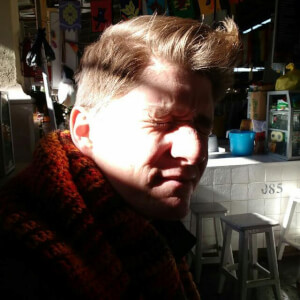It is 2020 and I am sitting in the Utrecht University Library thinking about how could I have felt (or how it still fells) to go into Teresa Margolles´ installation Vaporización (2001-2002) – a room filled with vaporized water used to clean corpses from a Mexican morgue in 2001. Experiencing(1) this installation, despite the water was disinfected and it posits no risk to human health, makes me reconsider the fragility of my body. It reconfigures the location and my embodied relationship with death, its politics, materiality and affects. This installation suggests a way of knowing that is corporeal and communal, where the location and our possible relationship with the (dead) body are framed within the post-human. Like air, the body is expanded outside its human limits; like corpses, air becomes human. The non-human is no longer separable from my-self. It spills on an into me, into us. It is now in my lungs, on my skin and clothes.
In this spirit, this paper will look into Rosi Braidotti’s (2013) theorization on post-human necro-political beings and becomings. By locating Vaporización within this framework I argue in favor of the generative capacity of the impersonal life-death continuum posted by posthuman necro-politics (Baridotti 2013). Therefore, the installation is affective-material evidence for this concept’s validity; while proposing that bio-politics (Foucault 2003) and necro-politics (Mbembe 2003) are not only about the processes of making life and letting die, but about the lived embodied relationship with/of the corpse itself. In this sense, what does it mean to ‘be’ and ‘become’ dead when the embodied subjectivity of the post-human continuum is redefined and relocated in and with the non-human? When does this vapor stop being ‘touched’ by death? Where is that vapor now? Can it be contained by walls? By time?
Vaporización’s crude post-human materialization of the dead body(ies), vaporized corpses, allowed me to argue, on the one hand, for necro-politics able to understand, analyze and critique the flexible location of the (dead) body as trans-temporal (Braidotti 2013) trans- material (Gatens 1996) and trans-corporeal (Alaimo 2008). While, on the other hand, arguing for the potential of an embodiment of death that advocates for politics of inter-species ecologies of shared vulnerabilities, which can connect us trans-individually, trans- generationally and eco-philosophically.
It is 2020 and I am already dead. But this death (and life) in me are no longer mine or individual.
Notes:
(1) Different from reading and analyzing, I am proposing an affective and virtual positioning of my own body within the installation although I have never and probably will never see and feel it. Reading and interpreting have too much of a semantic and “language-like” taint and I would like to approach this installation not as a text but as an experience with which I can bodily think with and through. Not as a text to interpret and give value, but an experience that triggers and produces embodied thoughts and emotions.
Back






